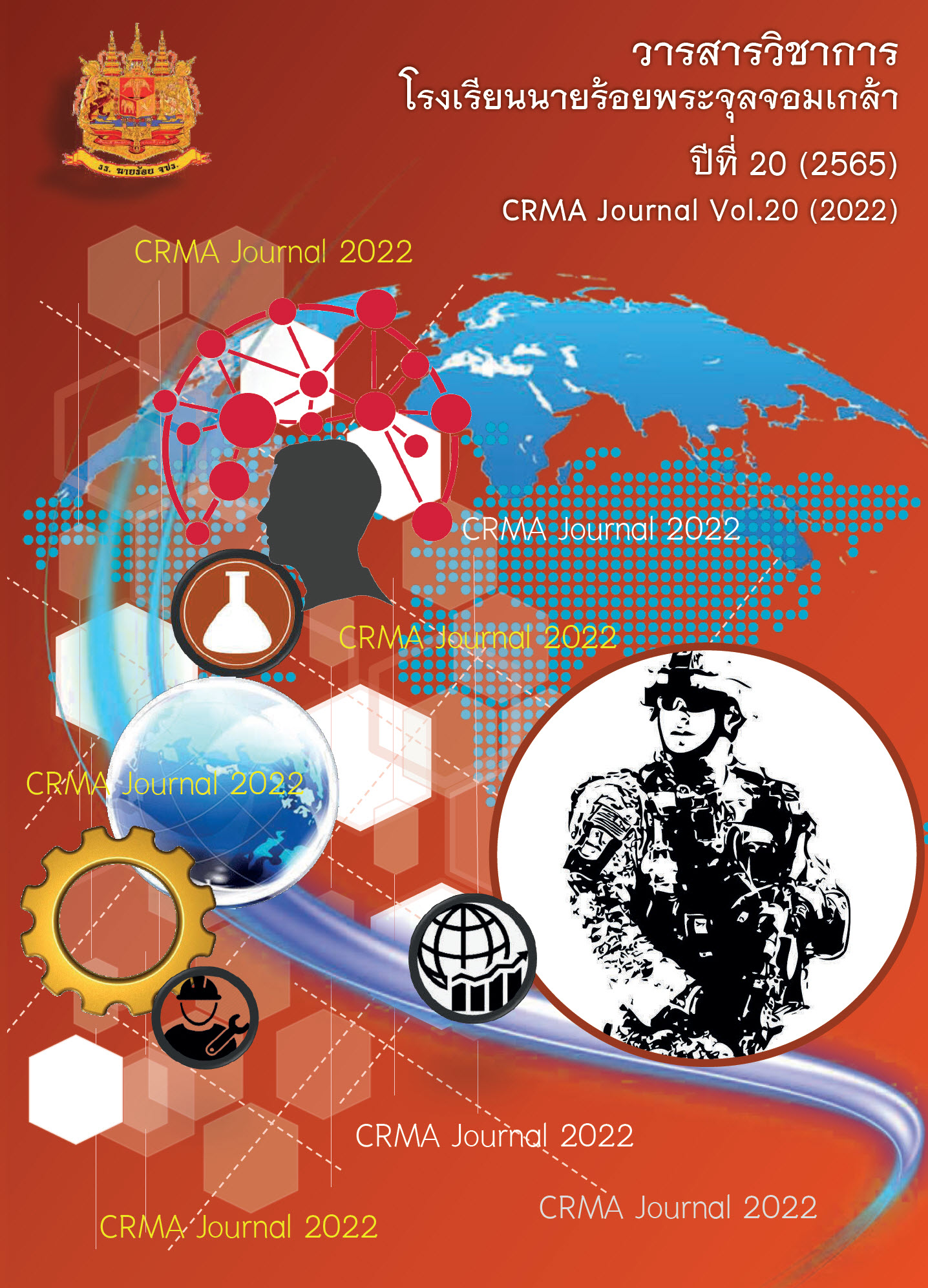การวิเคราะห์เชิงสถิติของปัจจัยที่ส่งผลต่อการเกิดไฟป่าในจังหวัดน่าน
Main Article Content
บทคัดย่อ
งานวิจัยนี้ศึกษาปัจจัยและพฤติกรรมที่ส่งผลต่อการเกิดไฟป่าด้วยมิติตัวแปรเวลาและกายภาพ ในพื้นที่ศึกษาจังหวัดน่าน โดยมีการแบ่งพื้นที่การศึกษาออกเป็น 4 เขตตามจุดเกิดไฟ กล่าวคือ เขต 1 ทิศใต้ครอบคลุมบริเวณอำเภอนาน้อยและนาหมื่น เขต 2 ทิศตะวันออกครอบคลุมบริเวณอำเภอเวียงสาและแม่จริม เขต 3 ทิศเหนือครอบคลุมบริเวณอำเภอปัว บ่อเกลือและเชียงกลางและเขต 4 ทิศตะวันตกครอบคลุมบริเวณอำเภอท่าวังผา เมืองน่านและบ้านหลวง โดยใช้ข้อมูลในช่วงปี พ.ศ. 2555 – 2562 สำหรับตัวแปรที่นำมาวิเคราะห์ได้แก่ อุณหภูมิ ความชื้น ระดับความสูง ความชัน การใช้ประโยชน์ที่ดิน โครงข่ายสายทาง โดยการวิเคราะห์ค่าความถี่ การทดสอบไคสแควร์และสหสัมพันธ์ในรูปแบบเพียร์สัน ร่วมกับค่าถดถอยพหุคูณ จากโปรแกรม IBM SPSS Statistic 22 ผลการศึกษาพบว่า ทั้ง 4 เขต การเกิดไฟป่ามีความสัมพันธ์กับเดือนในปี โดยเฉพาะเดือนมีนาคมและเมษายน ในขณะที่ไม่พบความสัมพันธ์จากวันในสัปดาห์ และพบความถี่สูงของการเกิดไฟป่าในช่วงเวลากลางวัน สำหรับปัจจัยสำคัญที่ส่งผลต่อการเกิดไฟป่าทั้ง 4 เขตพื้นที่คือ ระยะห่างจากถนนและพื้นที่เกษตร เนื่องจาก จุดไฟป่ามากกว่าร้อยละ 80 มักเกิดที่ระยะห่างจากถนนและพื้นที่เกษตรไม่เกิน 1 กิโลเมตร ซึ่งจำนวนความถี่จะลดลงตามระยะห่างที่เพิ่มขึ้น อย่างไรก็ตาม ยังพบอีกว่าไฟป่าส่วนใหญ่มักเกิดที่ระดับความสูงและความชันใกล้เคียงกับพื้นที่เกษตร ซึ่งแสดงให้เห็นว่า ไฟป่ามีความเกี่ยวข้องกับกิจกรรมทางการเกษตรของมนุษย์ เช่น การเตรียมพื้นที่เกษตรที่มีอยู่แล้วและการขยายพื้นที่การเกษตร ของทั้ง 4 เขต
Article Details

This work is licensed under a Creative Commons Attribution-NonCommercial-NoDerivatives 4.0 International License.
ผลงานที่ได้รับการตีพิมพ์ ถือเป็นลิขสิทธิ์ของวารสารฯ
References
ทวิดา กมลเวชช, คู่มือจัดการภัยพิบัติท้องถิ่น, กรุงเทพฯ: สถาบันพระปกเกล้า, 2554.
ส่วนควบคุมไฟป่า. (4 มกราคม 2562). สถิติไฟไหม้ป่าย้อนหลัง ประจําาปีงบประมาณ 2541-2561 [ออนไลน์]. แหล่งที่มา: http://www.dnp.go.th/ForestFire/web/frame/statistic.html
D. Marod, U. Kutintara, H. Tanaka, and T. Nakashizuka, Plant Ecology, vol. 161, no. 1, pp. 41-57, 2002, doi: 10.1023/a:1020372401313.
กรมอนามัย กระทรวงสาธารณสุข, มาตรฐานค่าเฝ้าระวังผลกระทบต่อสุขภาพ จากฝุ่นละอองขนาดเล็กกว่า 10 ไมครอน (PM10), กรุงเทพฯ: สมาคมส่งเสริมเทคโนโลยี (ไทย-ญี่ปุ่น), 2558.
กรมควบคุมมลพิษ. (10 เมษายน 2562). สถานการณ์หมอกควัน (ภาคเหนือ). [ออนไลน์]. แหล่งที่มา: http://air4thai.pcd.go.th/ webV2/download.php?grpIndex=1
R. K. Jaiswal, S. Mukherjee, K. D. Raju, and R. Saxena, “Forest fire risk zone mapping from satellite imagery and GIS,” International Journal of Applied Earth Observation and Geoinformation, vol. 4, no. 1, pp. 1-10, 2002, doi: 10.1016/s0303-2434(02)00006-5.
พงศ์เทพ สุวรรณวารี, “ผลกระทบของไฟป่าต่อความสมบูรณ์ของป่าไม้และคุณภาพอากาศในจังหวัดเชียงใหม่,” มหาวิทยาลัยเทคโนโลยีสุรนารี, ส่วนภูมิสารสนเทศ, สําานักฟื้นฟูและพัฒนาพื้นที่อนุรักษ์, นครราชสีมา, 2554
V. Sevinc, O. Kucuk, and M. Goltas, “A Bayesian network model for prediction and analysis of possible forest fire causes,” Forest Ecology and Management, vol. 457, 2020, doi: 10.1016/j.foreco.2019.117723.
สํานักจัดการที่ดินป่าไม้, “โครงการจัดทําาข้อมูลสภาพพื้นที่ป่าไม้ปี พ.ศ. 2560-2561 (รายงานฉบับสมบูรณ์),” กระทรวงทรัพยากรธรรมชาติและสิ่งแวดล้อม, กรมป่าไม้, กรุงเทพมหานคร, 2561
J. Kitchaicharoen, P. Suebpongsang, C. Sangchyoswat, and P. Promburom, “Situational analysis in support of the development of integrated agricultural systems in the Upland Areas of Nan Province, Thailand,” CGIAR., IITA., Ibadan., 2015.
B. Ekasingh, C. Sungkapitux, J. Kitchaicharoen, and P. Suebpongsang, “Competitive commercial agriculture in the Northeast of Thailand.” Washington, The World Bank., DC., 2007.

